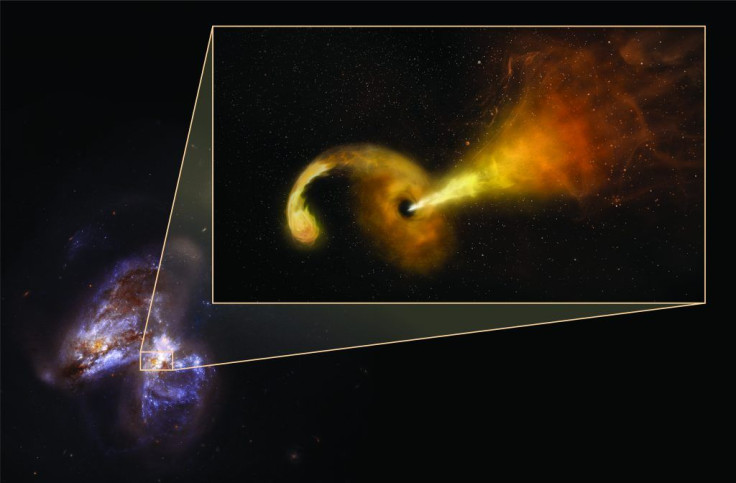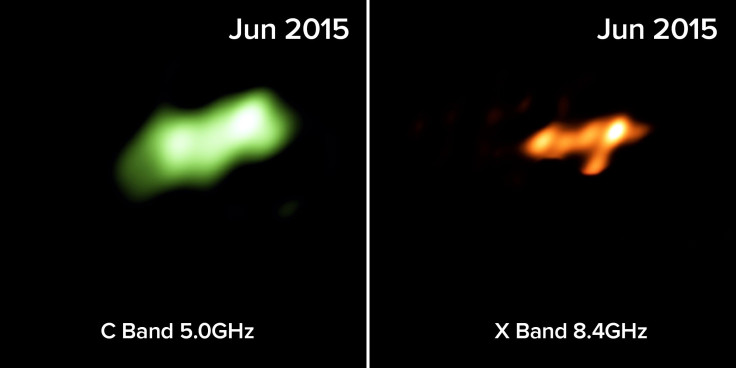Eruption Material From Supermassive Black Hole’s Violent Encounter With Star Directly Imaged

An international group of astronomers has directly imaged the eruption resulting from a violent encounter between a supermassive black hole 20 million times more massive than our sun and a much smaller star, some 150 million light-years away.
Supermassive black holes are known to devour everything with their powerful gravitational tug. They rip apart cosmic objects wandering in close proximity — a fact that spelled doomed fate of the stellar body. Essentially, as the encounter took place, the star with mass equaling that of two suns was shredded and superfast jets of material were ejected outward.
Though it has long been theorized that stellar death-encounters, commonly known as tidal disruption events or TDEs, are common in the universe, only a few of them have been detected. Astronomers have posited that the material stripped from the star during the event takes the form of rotating disk around the black hole, which emits intense X-rays, visible light, and jets of particles nearly at light speed.
However, the widely theorized phenomenon wasn’t observed until scientists used radio and infrared telescopes to track and image this particular event in a pair of colliding galaxies known as Arp 299.

The observation of erupting material started more than a decade ago when astronomers using the William Herschel Telescope in the Canary Islands spotted a bright burst of infrared light from the core of one of the two colliding galaxies. Follow-up investigations of the same region revealed a distinct source of radio emission as well.
Over the years, the researchers noted the object in question remained bright in infrared and radio light, but not in x-ray or visible wavelength of the spectrum.
“The most likely explanation is that thick interstellar gas and dust near the galaxy’s center absorbed the X-rays and visible light, then re-radiated it as infrared,” Seppo Mattila, a member of the team, said in a statement.
As the work continued from various telescopes, the group witnessed the distant radio emission’s expansion. They found that it was moving toward one direction, just like a jet of material. Additional number-crunching indicated that the distant material is expanding nearly at a quarter of the speed of light, which confirmed the theory of material ejection due to TDEs.
“Never before have we been able to directly observe the formation and evolution of a jet from one of these events,” Miguel Perez-Torres, one of the authors behind the latest work, said in the statement.
Most of the time “supermassive black holes are not actively devouring anything, so they are in a quiet state,” Perez-Torres explained. “Tidal disruption events can provide us with a unique opportunity to advance our understanding of the formation and evolution of jets in the vicinities of these powerful objects.”
The study detailing the observation was published June 14 in the journal Science.
© Copyright IBTimes 2024. All rights reserved.





















